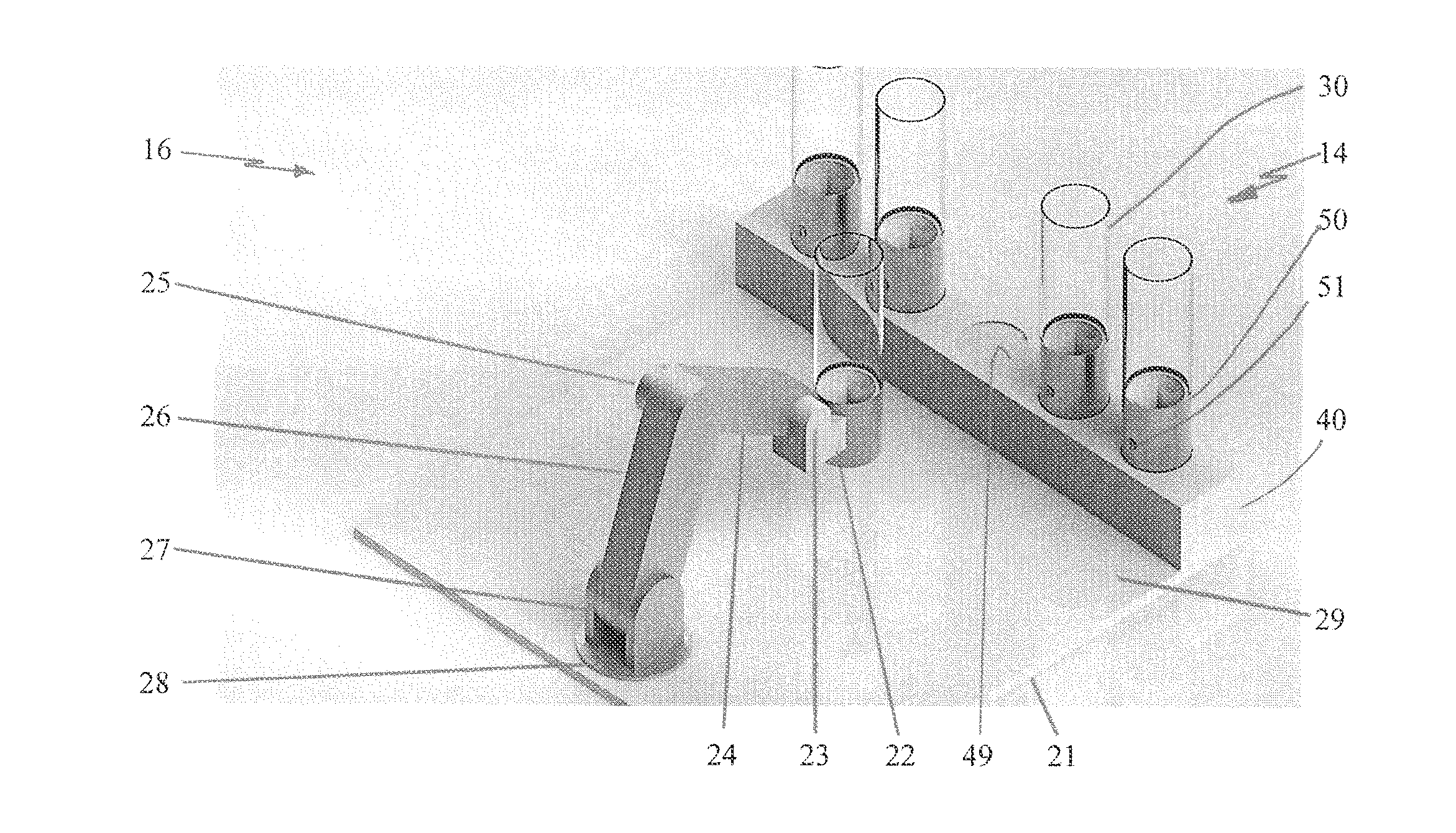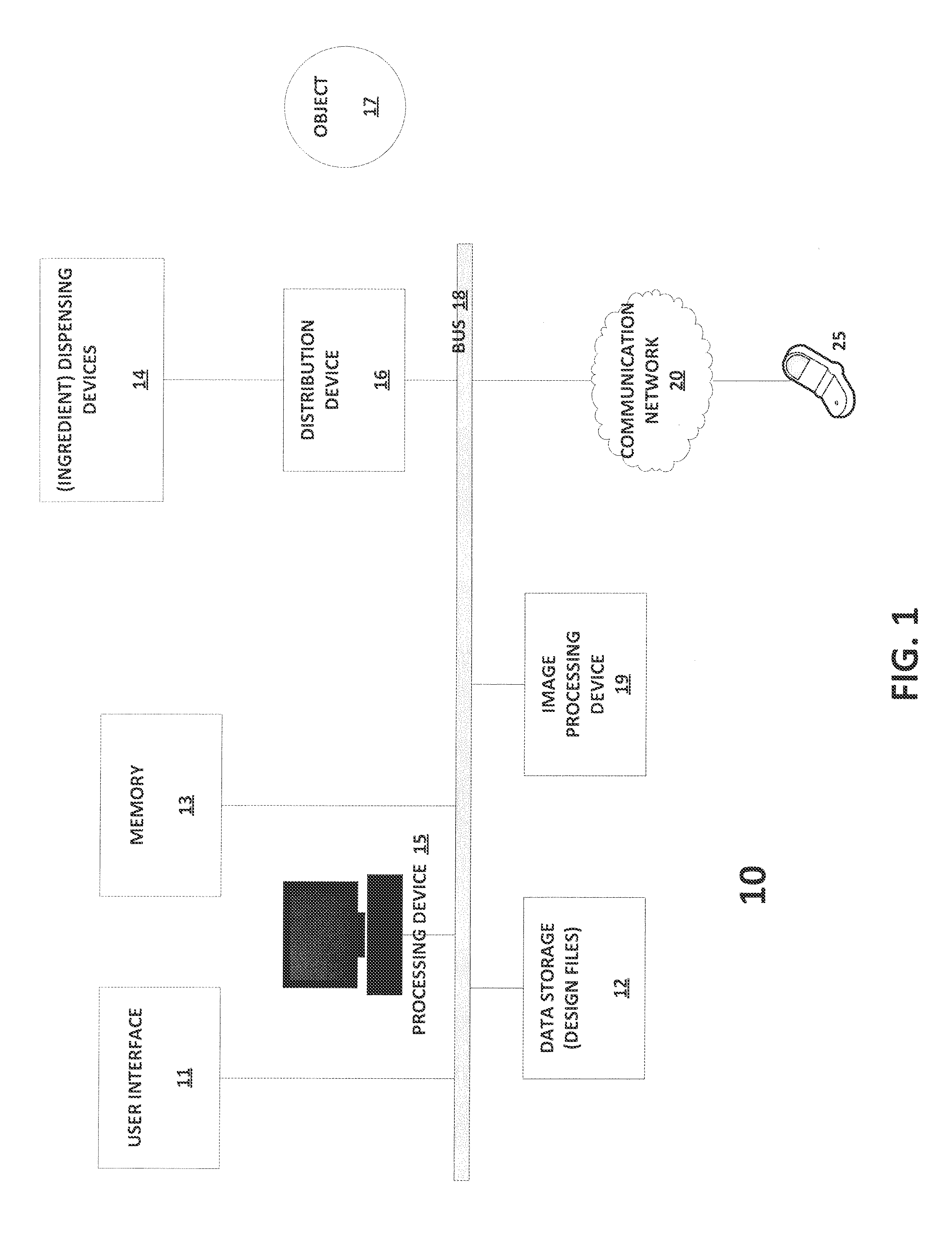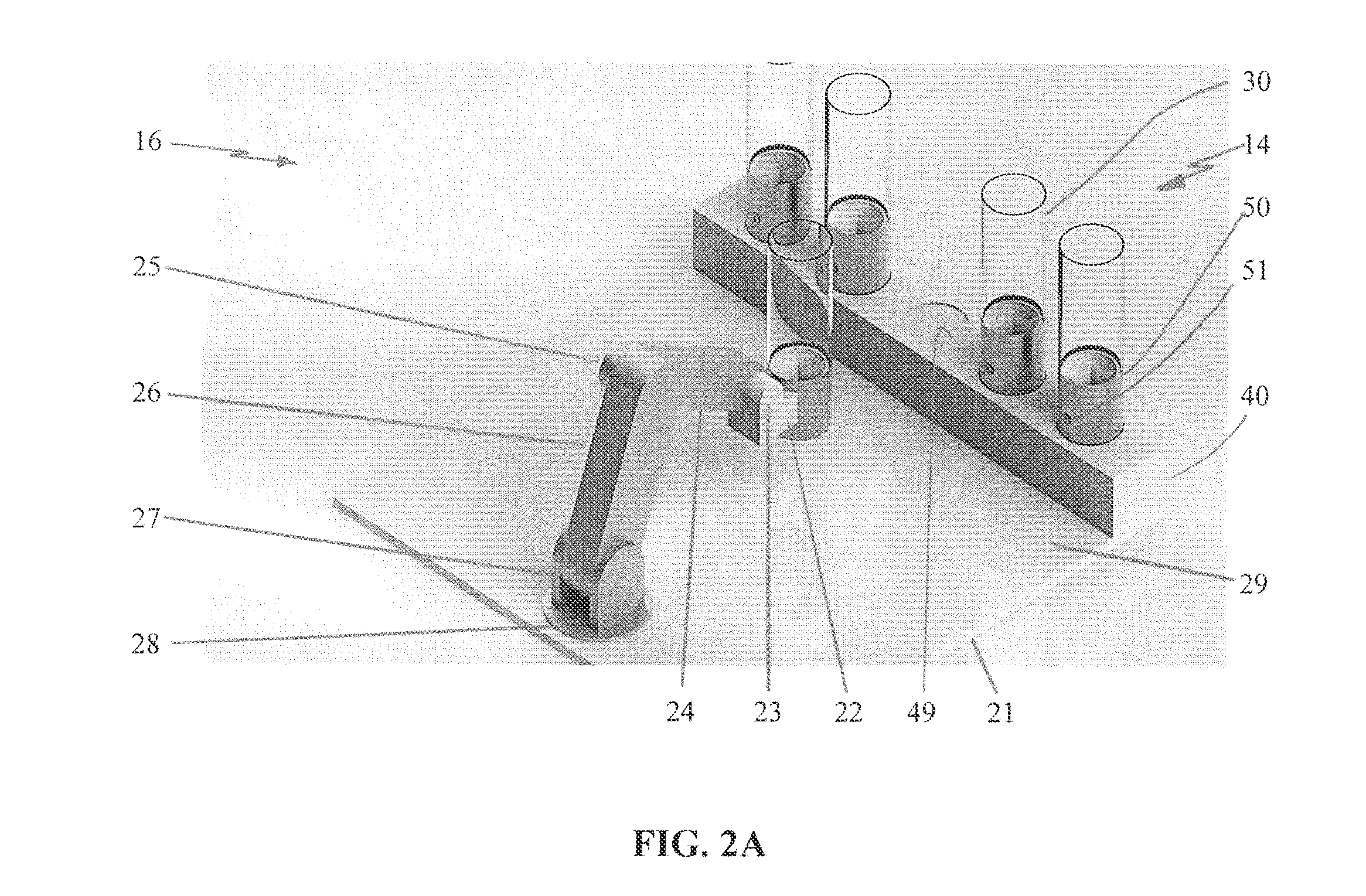Automated processing and placement of three-dimensional food ingredients on a surface of an object
a technology of three-dimensional food ingredients and automatic processing, applied in the direction of dough processing, manufacturing tools, instruments, etc., can solve the problems of labor intensive process, significant variance between items, and limited customization options, and the existing decorating process is expensiv
- Summary
- Abstract
- Description
- Claims
- Application Information
AI Technical Summary
Benefits of technology
Problems solved by technology
Method used
Image
Examples
Embodiment Construction
[0021]Referring to FIG. 1, an illustrative embodiment of a system 10 for placing three-dimensional items, e.g., food ingredients, on a surface of an object 17, e.g., a baked good, pizza, cake, and the like, will be described. For expediency, the description assumes that the object 17 is a pizza and that the three-dimensional items correspond to a myriad of prepared pizza ingredients. Those of ordinary skill in the art can appreciate that the invention can be practiced on other objects 17 that include, without limitation, other baked goods or prepared foods using other items that include, without limitation, other ingredients and prepared foods.
[0022]As depicted in FIG. 1, the system 10 may include a data storage device 12, a processing device 15, a plurality of dispensing devices 14, and a distribution device 16, which can all be electrically and electronically connected or coupled by an interconnection element, e.g., one or more buses 18. The bus 18 may include one or more physical...
PUM
 Login to View More
Login to View More Abstract
Description
Claims
Application Information
 Login to View More
Login to View More - R&D
- Intellectual Property
- Life Sciences
- Materials
- Tech Scout
- Unparalleled Data Quality
- Higher Quality Content
- 60% Fewer Hallucinations
Browse by: Latest US Patents, China's latest patents, Technical Efficacy Thesaurus, Application Domain, Technology Topic, Popular Technical Reports.
© 2025 PatSnap. All rights reserved.Legal|Privacy policy|Modern Slavery Act Transparency Statement|Sitemap|About US| Contact US: help@patsnap.com



